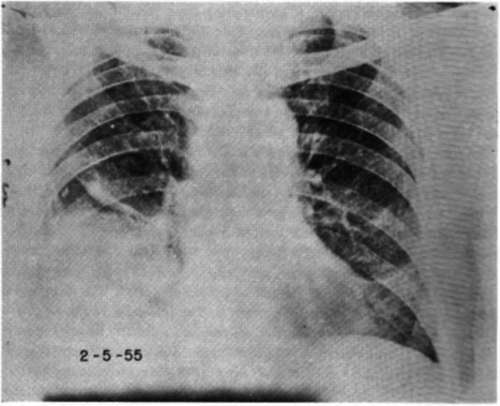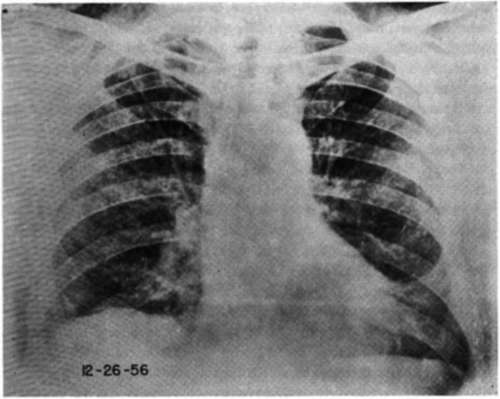Selenium Preparations Cancer Treatment
Description
This section is from the book "Research In Physiopathology As Basis Of Guided Chemotherapy With Special Application To Cancer", by Emanuel Revici. Also available from amazon: Research In Physiopathology
Selenium Preparations Cancer Treatment
We have previously noted the considerations which led us to study lipoidic compounds containing bivalent selenium. The compound used in clinical research was hexyldiselenide, a lipoid with an -Se Se- as a polar group. Oily solutions in various concentrations were given by subcutaneous or intramuscular injection. Doses as low as 4 micrograms or as high as 400 milligrams were employed several times a day. For oral administration, capsules containing the product in solution in hydrogenated oil in amounts from 4 micrograms to 100 milligrams were employed. A short time before the experimental therapeutic use of selenium compounds, the means of recognizing the existing offbalance were implemented with the sulfhydryl index, a measure of urinary elimination of the sulfhydryl group.
Despite negative results in animal tumors, hexyldiselenide was used clinically in the hope that, with treatment guided by the data furnished by urinalyses, satisfactory results could be obtained. The sulfhydryl index served, at the beginning of this study as the principal indication for the administration of the selenium compound. Later we used urinary surface tension as the criterion, and lately we have used the changes in serum and total blood potassium. In general, we administered the medication only if the sulfhydryl index was below 1.5, the surface tension above 68. A marked influence upon the tumor itself was seen in a relatively high proportion of cases. The results also are of theoretical interest since the compound had less influence upon symptoms at the tissue level, such as pain, or at the systemic level, and more on those at the cellular level. The effect on pain was slow to appear, often requiring days. But once relief of pain was achieved, it persisted for a long time, in contrast to the brief effect produced by other agents such as thiosulfate or hydropersulfides acting directly at the tissue level. Primarily because hexyldiselenide alters the pattern present at the cellular level, it must be emphasized that determining proper dosage at least in the beginning, appeared more difficult than foi any other substance with which we have had experience.
At the beginning, we used doses in the range of 10-80 mg. but in a number of cases a persistent change to the opposite pattern occurred after one or two doses. This led to the utilization of smaller and smaller doses in order to avoid too rapid change to the opposite pattern. Also with small doses, we hoped to limit the therapeutic response to the cellular level only. We decreased the daily dose to 5 mg., then to 1 mg. and eventually even to micrograms. With these small amounts, the immediate clinical effects seemed to be almost entirely limited to the cellular level. The changes in pain and the systemic pattern were minimal. The choice of dose to be given was determined in the second part of this research primarily by urinary surface tension. It was observed that microgram doses may influence lesions without changing the values of the other analyses corresponding to the systemic level.
The clinical results obtained with the use of hexyldiselenide in humans warrants detailed consideration. Good results were obtained with greater consistency after the problem of dosage was resolved and the relationship to urinary analyses was established. Important objective changes could be achieved by using urinary analyses as a guide for dosage, as illustrated by the following cases.
A. B., 68 years old, male. In October 1949, the patient had an amputation of the left leg at the hip joint performed at the Memorial Hospital because of a tumor of the femur. The pathological diagnosis was sarcoma. He was well until July 1955 when he began to cough and have recurrent episodes of hemoptysis. X ray examination revealed right pleural effusion and infiltration of the right lower lobe. He was readmitted to Memorial Hospital in October 1955 and thoracentesis revealed bloody fluid. Bronchoscopy showed partial narrowing of the right lower lobe bronchus. Examination of pleural fluid and bronchial washing by the Papanicolau method showed cells that were suspicious for malignant disease, but not conclusive. It could not be determined whether a primary lung cancer or metastatic sarcoma was present. An exploratory thoracotomy was advised but refused by the patient, who signed himself out.

Fig. 187. Anteroposterior view of chest in Case (A.B.) at time of admission showing the presence of a mass in the lower part of the right hemithorax.
Two weeks later, he came under our care and has been an ambulatory patient since then. His chest pain had been considerably relieved with the thoracentesis and there was no bleeding. He complained of distress and tightness in the chest as well as perspiration at night. A physical examination revealed dullness in the lower right hemithorax below the seventh rib. Blood pressure was 208/165. X ray examination revealed a large round mass occupying the right lower lobe. (Fig. 187)
Urinalyses showed a low surface tension, low specific gravity, high pH and low sulfhydryl excretion. Hexyldiselenide was chosen as the only chemotherapeutic agent. Treatment was started with a tenth of a milligram twice a day, and was increased gradually to half a milligram twice a day. Chest pain and hemoptysis decreased in the following weeks. The general condition improved. He felt better and had no cough. X rays a month and a half later showed that the right lower lobe mass was slightly smaller in size.
In January 19S6, a striking reduction in size and density of the lower right lobe mass was seen. It was now about 60% as big as a month before.

Continue to:


